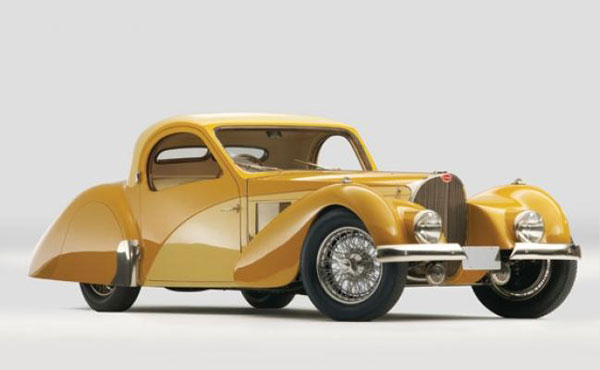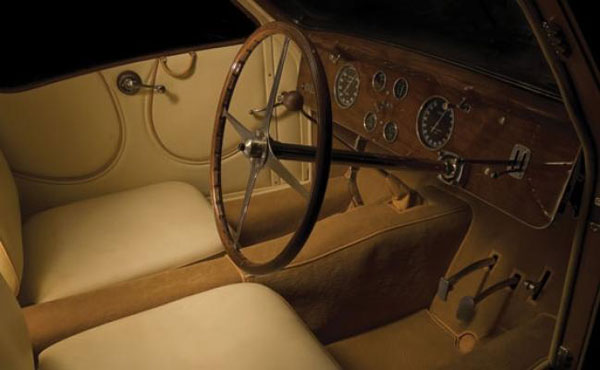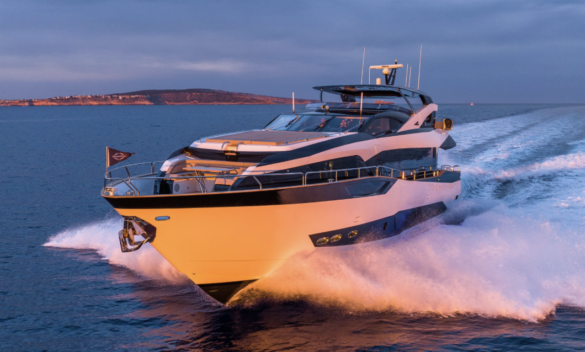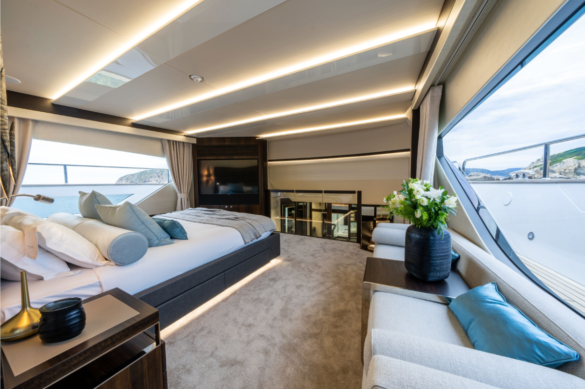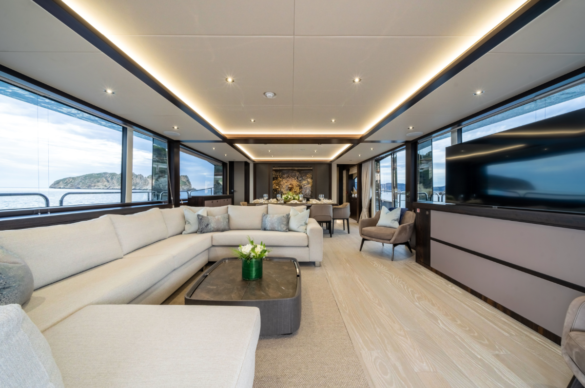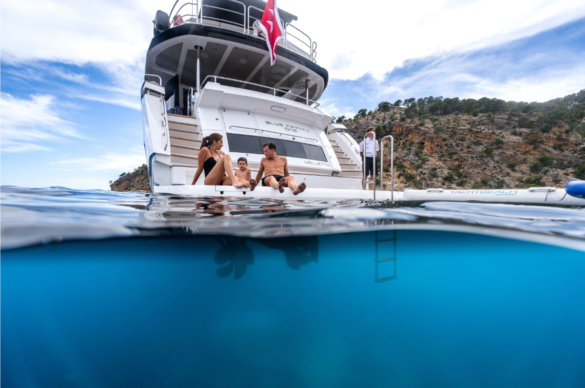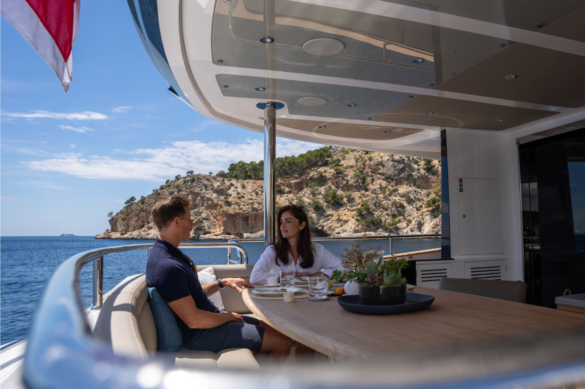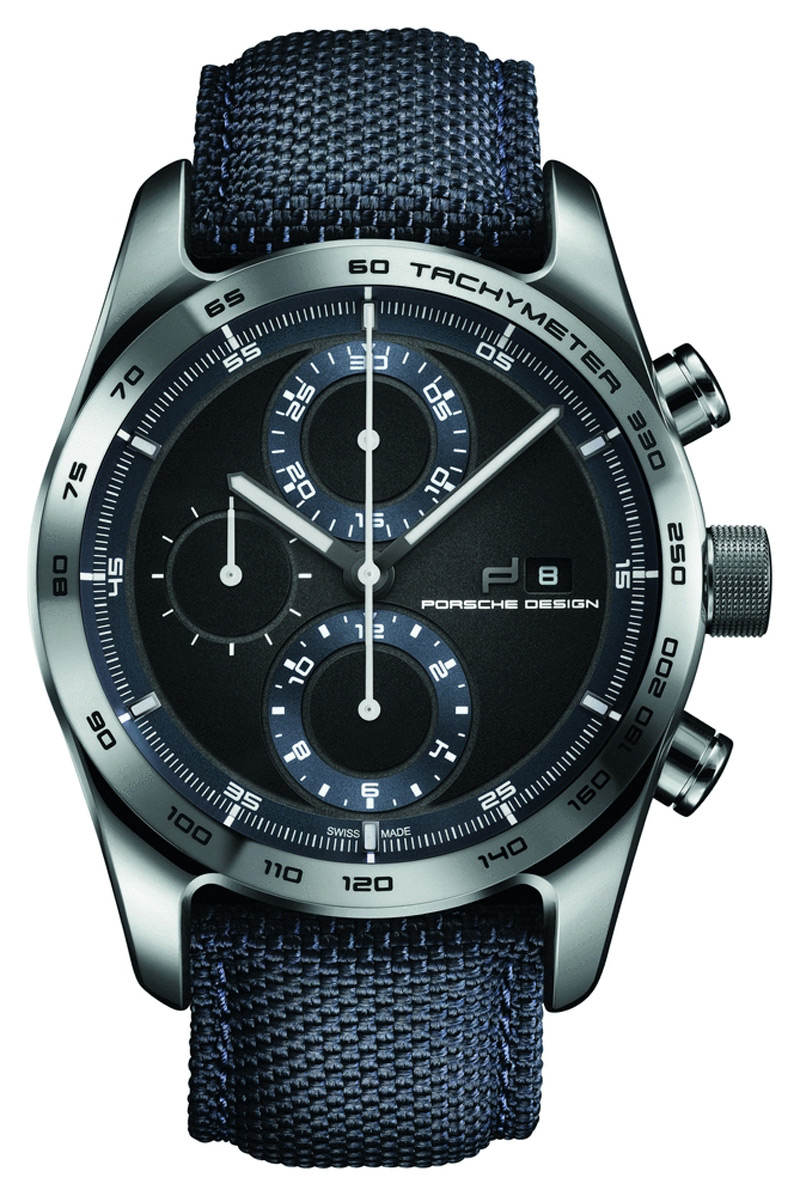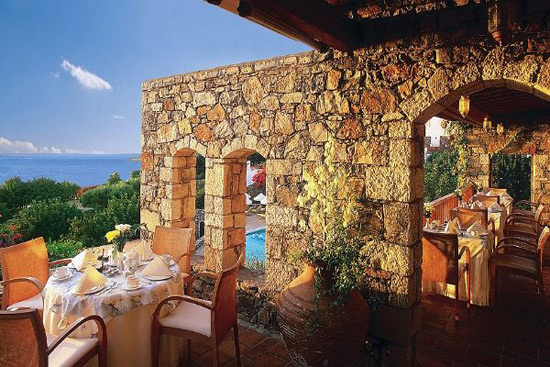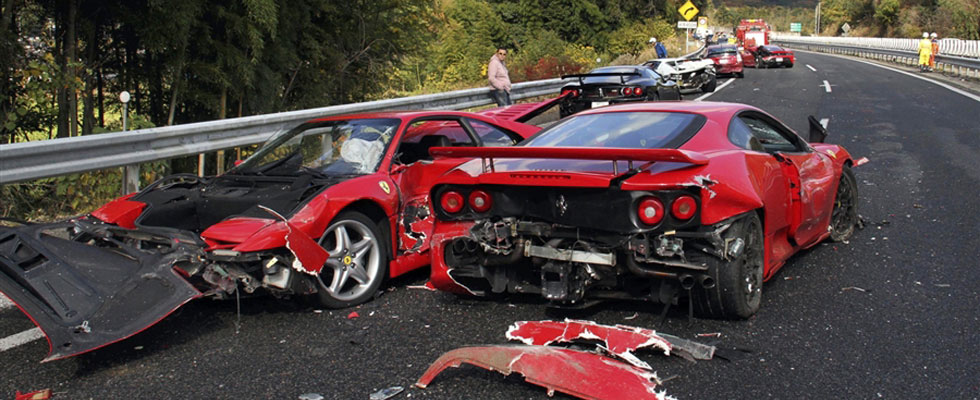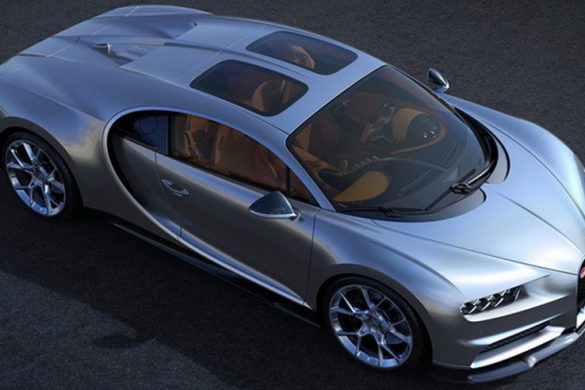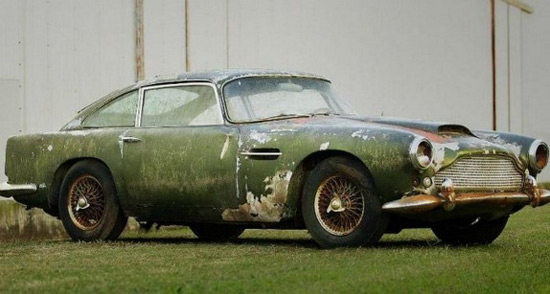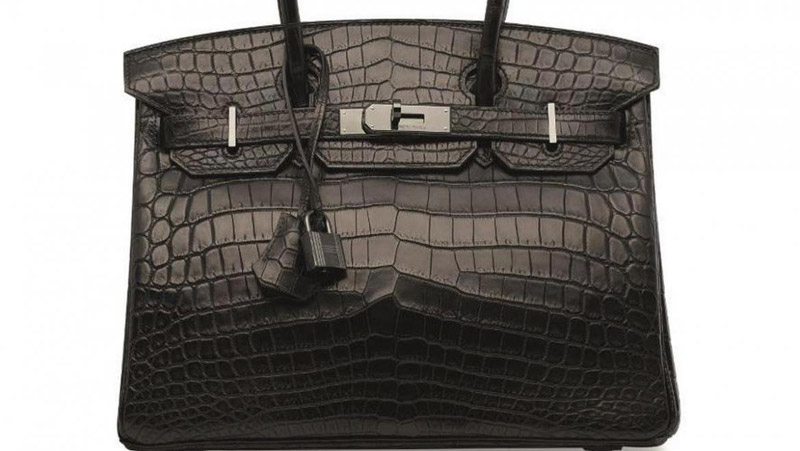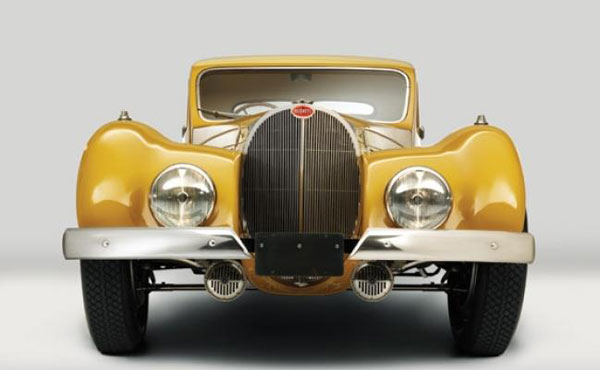
1937 Bugatti 57SC Atalante Coupe
200 hp, 3,257 cc supercharged DOHC inline eight-cylinder dry-sump engine, four-speed manual gearbox, hollow front axle with semi-elliptic leaf springs, live rear axle with reversed quarter-elliptic leaf springs and torque arm, and four-wheel cable-operated mechanical drum brakes. Wheelbase: 2,980 mm (117.3″)
- One of just over 40 Type 57S chassis built and one of only 17 Atalante Coupés
- Fascinating history; long-term ownership and restoration within Harrah Collection
- Best of Show, 26th Pebble Beach Concours d’Elegance (1976)
- Fastidiously maintained within noted collection
- Documented by marque expert David Sewell
The Type 57 Bugatti was an entirely new design under the direction of Le Patron’s talented son, Jean Bugatti. Production began in 1934 and continued until 1940. The Galibier sedan, Ventoux coach (two-door sedan) and Stelvio drophead coupé comprised the bulk of production, followed by the later Atalante Coupé, with coachwork built in Bugatti’s Molsheim coachworks or by Gangloff in nearby Colmar. Demand for sporting versions prompted the Grand Raid Roadster in 1934, the Type 57T with torpedo coachwork in 1935 and, the ultimate variant, the Type 57S and SC.
The Sporting Type 57S
The surbaissé (lowered) Type 57S “Sport” chassis featured deep-section frame rails through which the rear axle passed, enabling further streamlining. Other advancements included a dry-sump oiling system derived from the T59 GP car. A Roots-type supercharger was also available, raising power output and top speed to 200 hp and some 120 mph, respectively. The T57S was introduced in late 1937 and just over 40 production examples were built in total, of which just 17 were fitted with elegant Atalante Coupé coachwork. Of total 57S production, only two cars were fitted from the factory with superchargers, rendering them “57SC” examples. The vast majority of supercharged Type 57S’s, however, were upgraded to “SC” specification later in life.
Chassis no. 57551
This Bugatti, chassis 57551, has a remarkably complete and fascinating history. According to the definitive Bugatti: Les 57 Sport by Pierre-Yves Laugier, 57551 was the first of four Type 57 Atalante Coupés (57551, 57552, 57562 and 57573) produced with streamlined headlamps during the summer of 1937.
Road tested on 4 June, 1937, 57551 was completed and left Bugatti’s Molsheim coachworks with Atalante coachwork on 23 July, 1937. Just three days later, it was delivered to first owner Mr. Jean Lévy, the Deputy Administrator of the family-owned “Grands Moulins de Strasbourg,” a grain-milling company established by his father that still operates today.
Mr. Lévy used the Atalante until the outbreak of World War II and then hid it on a family-owned farm in Dordogne. The Lévy family transferred ownership of 57551 to Maurice Weber, a livestock feed manager at the Grands Moulins and a trusted friend, on 7 June, 1941. Mr. Weber hid the car for the war’s duration, and on 8 March, 1946, it was sold in Paris, with the transaction believed to have been authorised by Jean Lévy himself. In July 1947, 57551 was sold to Mr. Pierre Pruvost of Bezons, France.
Mr. Pruvost retained 57551 for less than a year, and on 5 May, 1948, it was acquired by a Parisian owner and then displayed at the International Concours d’Elegance de Confort et de Technique de la Carrosserie, held 15 June, 1949, by which point its coachwork had been professionally restyled and modified, perhaps even by Figoni. On 9 December, 1949 it changed hands once more, before well-known French artist André Derain, a contemporary of Matisse and Vlaminck and a later colleague of Picasso, acquired the car in May 1951. Mr. Derain retained the car until May 1952 before 57551 found its way to Nice in November the following year, in the ownership of Mrs. Monique Weyener. While still in France, the gearbox was replaced, as was the crankcase, which has since been re-stamped with “30S,” the correct number for this particular car, chassis 57551.
The car then passed through four additional known owners before it was shipped to the United States in 1959 for Colin Downe. In the spring of 1961, Mr. Downe sold the Atalante to casino magnate and noted classic-car collector William Harrah of Reno, Nevada. O.A. “Bunny” Phillips was assigned the task of restoring the car’s chassis and mechanical components. Chassis 57551 was completely disassembled, and the body was removed from the chassis and stored in an airplane hangar in Reno. The frame and its components were found to have remained in excellent condition.
Mr. Phillips completed the chassis and the mechanicals and installed a factory original supercharger, elevating the car to the ultimate “SC” specification. The engine block was damaged and therefore replaced by a correct unit.
The body was returned to its original form and was beautifully refinished in the two-tone scheme of Patrol Cream and Lemon Oxide. The only deviation from the original form is the shape of the rear wings, which more closely resemble that of the Gangloff-bodied 57S and, again, was modified in period when the car was only about ten years old.
Completed on 27 August, 1976, the Bugatti was awarded Best of Show at the 26th Annual Pebble Beach Concours d’Elegance. In fact, 57551 was the last of Mr. Harrah’s four Pebble Beach Best of Show-winning cars. It was displayed at Harrah’s until eventually being acquired by Dr. Herbert W. Boyer of Mill Valley, California in January 1987. During his custodianship, Dr. Boyer kept 57551 at a small private garage in San Francisco, where it was carefully displayed and road-ready. Noted specialist Phil Reilly performed a complete engine rebuild during the mid-1990s, and ever since then, the Bugatti has been carefully and regularly exercised, albeit only for limited distances.
In 2002, the present owner commissioned a professional cosmetic refurbishment of the Atalante, returning the car to its fully restored glory. Today, it looks every bit as good as it did in the 1970s, a true testament to the meticulous care lavished on it since its Pebble Beach award-winning restoration was completed. With its fascinating and well-documented history from new, supercharged engine and wonderful presentation, this Type 57SC is certainly one of the most attractive, rare and best performing of all Bugatti road cars. It truly epitomises artistry in motion.

